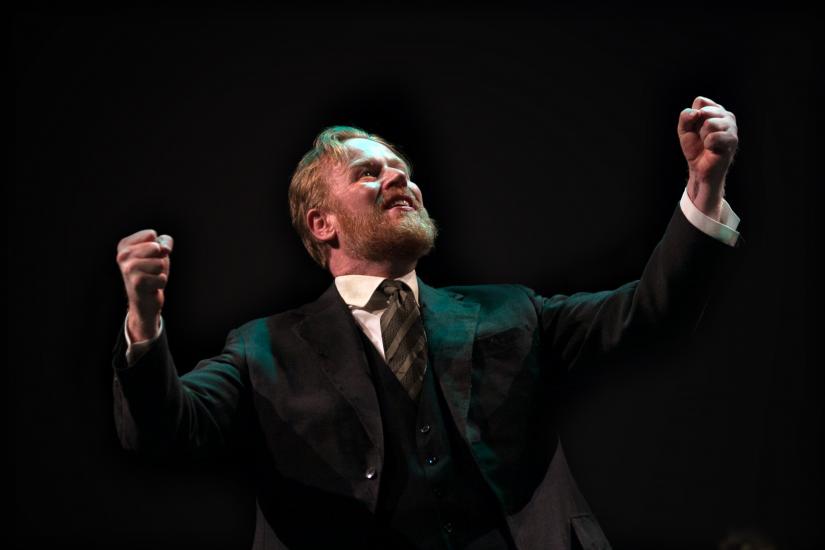Cambridge Arts Theatre, Cambridge – until Saturday 4th November 2023
Reviewed by Steph Lott
4****
Brian Friel’s “Faith Healer” is an enigmatic and moving play, skilfully directed by Michael Cabot for London Classic Theatre’s production. It delves into the shattered lives of its three characters, weaving a tapestry of regret, hope, and the elusive power of faith.
Set between 3 locations, the story unfolds through a series of four haunting monologues. Each character, Frank (Paul Carroll), his wife Grace (Gina Costigan), and his manager Teddy (Jonathan Ashley), presents their perspective on Frank’s unique talent – the ability to heal the sick, but with unreliable and unpredictable results. It is not clear whether he has a unique gift or whether he’s a con man. Grace and Teddy provide contrasting versions of events which causes even further doubt. The challenge is trying to work out exactly what took place from information provided by three distinctly unreliable narrators. This is an engrossing production of Brian Friel’s classic work. The three characters recall events that happened twenty years ago, each with differing perspectives. The audience need to pay close attention in order to spot any nuances or disparities.
Paul Carroll, in his portrayal of Frank, is spellbinding. His command of Friel’s complex and poetic dialogue is astonishing, and he flawlessly navigates the intricate emotional landscape of a man burdened with the weight of his own gift. With a raw vulnerability, Carroll takes us deep into Frank’s psyche, exposing his inner turmoil, anguish, and occasional flickers of hope. Carroll masterfully conveys the duality of Frank’s character – his charismatic charm that initially captivates, and the deep despair and self-doubt that lie just beneath the surface. Carroll’s performance is a tour de force.
However, Gina Costigan and Jonathan Ashley give equally powerful performances which provide necessary contrast to the character of Frank. There is a suggestion of a deep, complicated love and dependency between all three characters whose authenticity provides a necessary platform upon which the painful and tragic events can occur.
The staging is simple: there is an uneven and fragmented floor which suggest the outlines of the three countries where the narratives are set, with a large mirror upstage given a mottled broken and stained reflection of the action onstage. The stark and evocative design, coupled with subtle lighting changes, creates an ominous and bleak atmosphere in which the action unfolds.
In “Faith Healer” dialogue is discarded. The characters don’t address each other at all but instead speak only to the audience. This structure is extremely challenging because the actors must maintain the attention of the audience alone on a practically bare stage for long periods. So, while everything about this production is perfect, it is not a relaxing play to watch. The play is a puzzle of perspectives, leaving the audience to piece together the fragmented truth.

